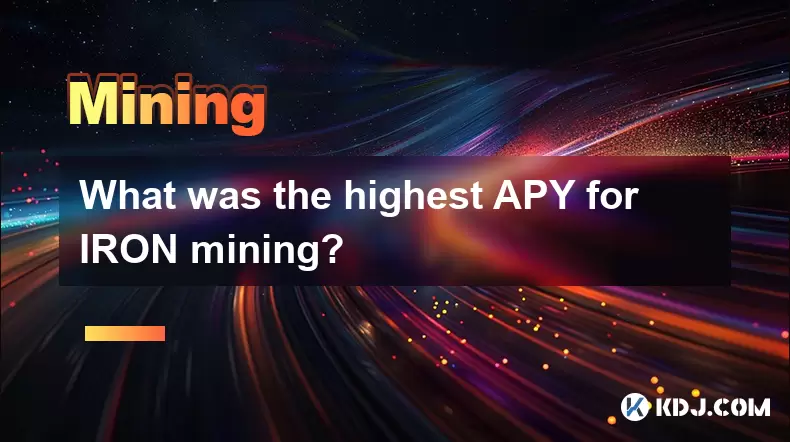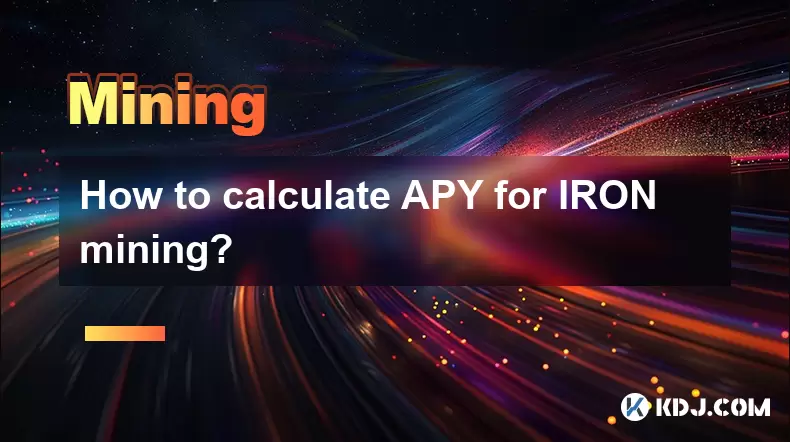-
 Bitcoin
Bitcoin $114100
-0.14% -
 Ethereum
Ethereum $3635
-0.73% -
 XRP
XRP $2.949
-2.85% -
 Tether USDt
Tether USDt $0.9999
-0.03% -
 BNB
BNB $760.3
-0.78% -
 Solana
Solana $163.8
-2.77% -
 USDC
USDC $0.9998
-0.04% -
 TRON
TRON $0.3323
-0.57% -
 Dogecoin
Dogecoin $0.2004
-2.99% -
 Cardano
Cardano $0.7245
-2.87% -
 Hyperliquid
Hyperliquid $37.52
-3.75% -
 Stellar
Stellar $0.3915
-3.58% -
 Sui
Sui $3.416
-2.20% -
 Bitcoin Cash
Bitcoin Cash $559.5
-0.84% -
 Chainlink
Chainlink $16.41
-2.16% -
 Hedera
Hedera $0.2406
-1.78% -
 Ethena USDe
Ethena USDe $1.001
0.00% -
 Avalanche
Avalanche $22.13
-1.98% -
 Litecoin
Litecoin $117.8
-4.32% -
 UNUS SED LEO
UNUS SED LEO $8.989
0.01% -
 Toncoin
Toncoin $3.183
-5.09% -
 Shiba Inu
Shiba Inu $0.00001214
-1.97% -
 Uniswap
Uniswap $9.654
-1.71% -
 Polkadot
Polkadot $3.616
-1.18% -
 Monero
Monero $291.6
-2.66% -
 Dai
Dai $0.9999
0.00% -
 Bitget Token
Bitget Token $4.310
-1.10% -
 Cronos
Cronos $0.1382
-1.93% -
 Pepe
Pepe $0.00001021
-3.40% -
 Aave
Aave $257.9
-1.42%
Why does mining rely on the parallel computing power of graphics cards?
GPUs' parallel processing excels at solving cryptocurrency's complex cryptographic puzzles, outperforming CPUs. Mining difficulty dynamically adjusts, demanding ever-more powerful hardware, making GPUs, despite ASIC competition, currently dominant due to their cost-effectiveness.
Mar 24, 2025 at 06:56 pm

Key Points:
- Graphics cards (GPUs) excel at parallel processing, a crucial element in cryptocurrency mining algorithms.
- The architecture of GPUs is fundamentally different from CPUs, making them significantly more efficient for the complex calculations involved.
- Mining difficulty adjusts to maintain a consistent block generation time, requiring ever-increasing computational power.
- Alternative mining methods exist, but GPUs currently dominate due to their cost-effectiveness and performance.
- The future of GPU mining depends on evolving algorithms and the emergence of specialized hardware.
Why Does Mining Rely on the Parallel Computing Power of Graphics Cards?
Cryptocurrency mining, at its core, is a computationally intensive process. The goal is to solve complex cryptographic puzzles to validate transactions and add new blocks to the blockchain. This requires immense processing power, and this is where the parallel processing capabilities of graphics cards (GPUs) become invaluable.
Unlike central processing units (CPUs), which are designed for sequential processing, GPUs are built for parallel processing. They contain thousands of smaller processing cores that can work simultaneously on different parts of a problem. This allows GPUs to tackle the complex mathematical calculations required for mining far more efficiently than CPUs. This efficiency translates directly into a higher hashing rate, leading to a greater chance of successfully mining a block and earning rewards.
The algorithms used in many popular cryptocurrencies, like Bitcoin and Ethereum (prior to the merge), are specifically designed to be computationally demanding. These algorithms require massive amounts of calculations per second to solve the cryptographic puzzles. GPUs, with their parallel processing architecture, are ideally suited to handle this workload. Their ability to perform many calculations concurrently significantly speeds up the mining process.
The difficulty of mining is dynamically adjusted by the network to maintain a consistent block generation time. As more miners join the network, the difficulty increases, requiring even greater computational power to solve the puzzles. This escalating difficulty necessitates the use of increasingly powerful hardware, and GPUs have consistently been at the forefront of this technological arms race. The higher the hash rate a miner can achieve, the higher their chances of earning rewards.
While GPUs are currently dominant in cryptocurrency mining, it's important to acknowledge alternative methods. Application-Specific Integrated Circuits (ASICs) are specialized hardware designed solely for cryptocurrency mining. They often offer superior hash rates compared to GPUs, but their high initial cost and lack of versatility make them less attractive to many miners. Field-Programmable Gate Arrays (FPGAs) also offer a degree of programmability, allowing adaptation to different algorithms, but they generally don't match the performance-per-dollar ratio of GPUs.
The choice of mining hardware often depends on factors like the specific cryptocurrency being mined, the algorithm used, and the miner's budget. While ASICs are often the most powerful option, GPUs provide a good balance between performance and cost-effectiveness, making them a popular choice for many miners. The ongoing evolution of cryptocurrency algorithms and the development of new hardware will continue to shape the landscape of cryptocurrency mining.
Common Questions and Answers:
Q: Can I mine cryptocurrency using my CPU?
A: Yes, you can mine cryptocurrency using your CPU, but it's generally not a profitable endeavor. CPUs lack the parallel processing power of GPUs, resulting in significantly lower hash rates and thus lower chances of earning rewards. The electricity costs often outweigh any potential profits.
Q: What are the differences between GPU mining and ASIC mining?
A: GPU mining uses graphics cards, offering a balance of performance and cost-effectiveness but limited to specific algorithms. ASIC mining uses Application-Specific Integrated Circuits, offering superior hash rates but are expensive, inflexible, and only suitable for a single algorithm.
Q: How does the difficulty adjustment impact GPU mining?
A: As more miners join a network and its total hashing power increases, the difficulty of solving cryptographic puzzles adjusts upwards to maintain a consistent block generation time. This necessitates more powerful GPUs or a larger number of GPUs to remain competitive.
Q: Are there any other hardware options besides GPUs and ASICs for mining?
A: Yes, FPGAs (Field-Programmable Gate Arrays) offer a degree of programmability, allowing them to be adapted to different algorithms. However, their performance usually falls short of both GPUs and ASICs. Other specialized hardware solutions are constantly being explored but haven't achieved widespread adoption.
Q: What factors determine the profitability of GPU mining?
A: Profitability depends on several factors, including the cryptocurrency's price, the mining difficulty, the electricity cost, the GPU's hash rate, and the mining pool's fees. A high price, low difficulty, low electricity cost, high hash rate, and low fees are all beneficial for profitability.
Q: Is GPU mining environmentally friendly?
A: GPU mining, like all cryptocurrency mining, consumes significant amounts of electricity, raising environmental concerns. The environmental impact depends on the energy source used and the efficiency of the mining operation. Many miners are exploring greener energy sources to mitigate this impact.
Q: What is the future of GPU mining?
A: The future of GPU mining is uncertain. The development of new algorithms and the emergence of even more specialized hardware could potentially diminish the role of GPUs in cryptocurrency mining. However, GPUs are likely to remain a relevant option for mining less popular cryptocurrencies or those with algorithms less suited to ASICs.
Disclaimer:info@kdj.com
The information provided is not trading advice. kdj.com does not assume any responsibility for any investments made based on the information provided in this article. Cryptocurrencies are highly volatile and it is highly recommended that you invest with caution after thorough research!
If you believe that the content used on this website infringes your copyright, please contact us immediately (info@kdj.com) and we will delete it promptly.
- Acapulco Crafts in Crisis: Sales Plummet, Artisans Struggle
- 2025-08-06 14:30:12
- SEC, Crypto & Bitwise CIO: A New Dawn?
- 2025-08-06 14:35:11
- Coinbase, Financing, and the Crypto Market: Navigating Choppy Waters in NYC Style
- 2025-08-06 12:50:11
- Bitcoin in Indonesia: Crypto Education and Economic Strategy
- 2025-08-06 12:50:11
- DeriW Mainnet: Zero Gas Fees Revolutionize On-Chain Derivatives Trading
- 2025-08-06 10:30:11
- IOTA, Cloud Mining, and Eco-Friendly Crypto: A New York Investor's Take
- 2025-08-06 10:30:11
Related knowledge

What was the highest APY for IRON mining?
Jul 23,2025 at 05:14am
Understanding IRON Token and Its Mining MechanismThe IRON token is a stablecoin that operates within the Iron Finance ecosystem, primarily on blockcha...

What is impermanent loss in IRON pools?
Jul 23,2025 at 09:00am
Understanding Impermanent Loss in the Context of IRON PoolsImpermanent loss is a phenomenon that affects liquidity providers in decentralized finance ...

How to claim rewards from IRON mining?
Jul 23,2025 at 02:21pm
Understanding IRON Mining and Reward MechanismsIRON Finance operated as a decentralized finance (DeFi) protocol on the Polygon and Binance Smart Chain...

How to claim rewards from IRON mining?
Jul 29,2025 at 05:07am
Understanding IRON Mining and Reward MechanismIRON is a dual-token system designed to stabilize the value of a synthetic asset through a combination o...

IRON mining tutorial for beginners
Jul 27,2025 at 12:01am
What Is IRON and How Does It Work in the Cryptocurrency Ecosystem?IRON is a cryptocurrency token that operates on the Binance Smart Chain (BSC) and is...

How to calculate APY for IRON mining?
Jul 28,2025 at 09:49am
Understanding APY in the Context of IRON Token MiningWhen engaging in IRON token mining within decentralized finance (DeFi) platforms, Annual Percenta...

What was the highest APY for IRON mining?
Jul 23,2025 at 05:14am
Understanding IRON Token and Its Mining MechanismThe IRON token is a stablecoin that operates within the Iron Finance ecosystem, primarily on blockcha...

What is impermanent loss in IRON pools?
Jul 23,2025 at 09:00am
Understanding Impermanent Loss in the Context of IRON PoolsImpermanent loss is a phenomenon that affects liquidity providers in decentralized finance ...

How to claim rewards from IRON mining?
Jul 23,2025 at 02:21pm
Understanding IRON Mining and Reward MechanismsIRON Finance operated as a decentralized finance (DeFi) protocol on the Polygon and Binance Smart Chain...

How to claim rewards from IRON mining?
Jul 29,2025 at 05:07am
Understanding IRON Mining and Reward MechanismIRON is a dual-token system designed to stabilize the value of a synthetic asset through a combination o...

IRON mining tutorial for beginners
Jul 27,2025 at 12:01am
What Is IRON and How Does It Work in the Cryptocurrency Ecosystem?IRON is a cryptocurrency token that operates on the Binance Smart Chain (BSC) and is...

How to calculate APY for IRON mining?
Jul 28,2025 at 09:49am
Understanding APY in the Context of IRON Token MiningWhen engaging in IRON token mining within decentralized finance (DeFi) platforms, Annual Percenta...
See all articles

























































































